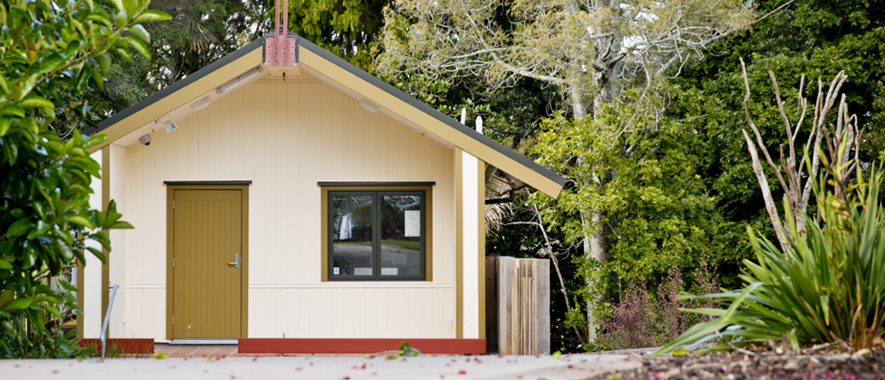Some council services will be unavailable over the Christmas and New Year break.
Check if you need to apply or order before Friday 19 December 2025.
Some council services will be unavailable over the Christmas and New Year break.
Check if you need to apply or order before Friday 19 December 2025.
Online EFTPOS is temporarily down from 31 October 2025 while we do essential system upgrades. We expect the service to be back online in mid-2026. During this time, you will need to use another form of payment.

A sleepout or cabin:
Under the NZ Building Regulations there is a lot of building work you can do yourself. The website for the Ministry of Business, Innovation and Employment (MBIE) is also helpful.
Before checking whether you need a consent for your detached stand-alone building, you need to know:
Depending on the size and design of your structure, the work (design and/or construction) may be required to be carried out by a Chartered Professional Engineer and/or Licensed Building Practitioner (LBP).
If your sleepout or cabin is close to a boundary, and you have the written approval from your neighbours, you can apply for a Deemed Permitted Boundary Activity.
This application replaces the need to apply for a resource consent.
From 31 August 2020, several new building consent exemptions are in place regarding new sleepouts, cabins and other detached stand-alone dwellings.
The latest guidance on these exemptions can found on the MBIE website.
Our online tool helps you check if you need a building or resource consent for your sleepout or cabin.
This tool only applies to sleepouts located on the ground.
Have your plans ready before you start.
It should take you about 10 minutes to complete.
Phone us on 09 301 0101.
Visit your nearest library with council services.
Smoke alarms must be installed in sleeping areas, or within 3m of sleeping areas so it can be heard effectively.
Sleepouts or cabins should not contain any facilities for cooking or sanitation, or any potable water supply.
The sleepout or cabin must be associated with the main dwelling where sanitary facilities are available.
Some common features where a consent will be required include:
Your building work must:
To avoid delays in processing your application you should:
Design engineers who provide PS1 , PS2 and/or PS4 must be registered with council as a producer statement author. Design engineers who provide a producer statement – design (PS1) must also provide design calculations, specifications and construction details. Producer statements must be dated no older than 90 days.
If your sleepout or cabin is close to a boundary, and you have the written approval from your neighbours, you can apply for a Deemed Permitted Boundary Activity.
This application replaces the need to apply for a resource consent.
You will still need to apply for a building consent, if required.
We reccommend you engage a proffessional to complete your application form.
If your sleepout or cabin is close to a boundary, and you have the written approval from your neighbours, you can apply for a Deemed Permitted Boundary Activity.
This application replaces the need to apply for a resource consent.
You will still need to apply for a building consent, if required.
You will need to login to complete the online application, upload the completed AC1011 Lodgement checklist: Residential, and pay by MasterCard, Visa, Online EFTPOS or Account2Account (bank transfer).
Complete a AC1011 Lodgement checklist: Residential.
We only accept online applications for this service. If you are unable to apply digitally, visit one of our libraries with council services for assistance in making your online application.
Call us on 09 301 0101 to speak with our building and planning help desk if you have questions regarding your application.
The consent fee depends on the value and complexity of your project.
There are separate fees for resource and building consents.
Visit Building consent fees and charges and Resource consent and Private Plan Changes fees and deposits.
We will return incomplete applications and ask for the missing information.
We will process your application within 10 working days.
We will let you know the decision by email or post.